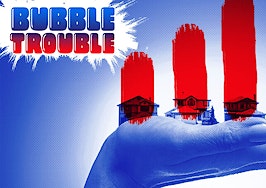Beginning in 1959, the US Census Bureau started to record housing starts. During the 48 years between 1959 and 2006, builders completed 52,941,000 homes for an average of 1,102,938 homes per year.
For the 14 years between 2007 to 2020, builders started 9,914,600 homes or 708,186 homes per year, which is 394,752 fewer starts per year than the historical average. This annual shortfall totals 5,526,525 homes during those years. In 2020, builders started 990,500 homes, still below the historical average of 1.1 million annual starts.

Homebuyers are now paying the price for the need for homes continued, intensified by a combination of new developments that increased housing demand. Included are the COVID-19 lockdowns that forced many to work, teach and learn remotely, a population that continued to live longer, preventing their homes from being recycled.
Millennials began reaching the homebuying age. Institutional investors entered the market in force. Local, state and federal restrictions and mandates increased, and interest rates decreased to record levels bringing in more buyers.
The population shift to states like Florida, Texas, Arizona and other states added to housing demand. And as if that were not enough, the immigration crisis at our border will further exacerbate our national housing demand.
The homebuilding industry was devastated and still suffers from the disintermediation of labor and manufacturing that began in 2006 and continued until 2012. Production then made a weak advance after housing starts dipped as low as 430,600 in 2011. That’s a drop of 75 percent or 1,288,200 starts, below the 2005 starts of 1,715,800 homes, according to the U.S. Census data.
Everyone is asking, “Are we in a Bubble?” Whatever we call it, the question on everyone’s mind is: How long will the shortage last? The table above shows that between 2007 and 2020, America had a shortfall of 5,526,525 housing starts.
The question “How long will the shortage last?” can be answered with simple math. Statistics show we have a 5,526,525 housing starts shortfall. Assuming the historical annual home starts of 1.1 million homes per year as adequate — and that builders could build 1.5 million homes a year — the national home inventory would gain 400,000 starts per year to apply to the shortfall.
Here is the math: 5,526,525 by 400,000 equals 13.8 years. That’s not good news for homebuyers.
Thinking optimistically and knowing a little about U.S. homebuilders and American ingenuity, builders might create an average of 2 million homes annually and achieve a supply-demand balance in about six years.
What has caused the demand-supply imbalance?
Except for the 1973 OPEC Oil Embargo, market downturns since 1959 were caused by changes in federal legislation or policies that affected interest rates or tax policy. Federal action is not driving the market today, but its policies are responsible for damaging builder production.
For those who do not know or remember, in the early 2000s, the federal government wanted as many people as possible to own a home. To make that happen, lenders were encouraged (if not coerced) to abandon established lending practices, making risky subprime loans.
Home loans were originated without regard to credit, employment or down payment. Circumvention of established lending guidelines was facilitated by the unprecedented policies of FHA, FNMA and FMAC that allowed sellers to gift down payments and closing costs to buyers through third parties.
These policies allowed unqualified borrowers to buy homes they could not afford and resulted in rampant mortgage fraud. What followed was an avalanche of foreclosures that triggered the severe decline in housing values, causing a 75 percent decline in housing starts — the longest and most severe decline since 1959 when the U.S. Census Bureau began recording that data.
Not only was the housing market damaged, but some may recall the U.S. government insured many of those failed mortgages. Loans were packaged and sold as low-risk investments because FHA, FNMA and FRMC backed them.
When the foreclosures made the loans worthless, FHA, FNMA and FRMC had to absorb the losses. The losses were so enormous they put the entire U.S. financial system on the verge of collapse. The solution was simple but expensive — a governmental bailout rescued the nation from the disaster the government created as it has done several times before.
Unfortunately, the U.S. housing supply will remain underserved for several years. However, it could take longer if the government intercedes.
Writer’s note: Factors not considered include apartment production, changing housing preferences, U.S. immigration policy, interest rate changes, federal tax rates and policy, and population growth. The average starts of 1.1 million from 1959 to 2007 does not account for population growth.
Ben Caballero is the president of Texas-based HomesUSA.com and America’s No. 1 Realtor for the past five years.













